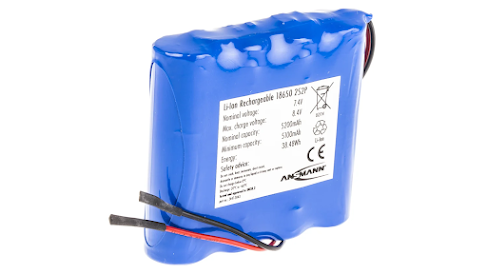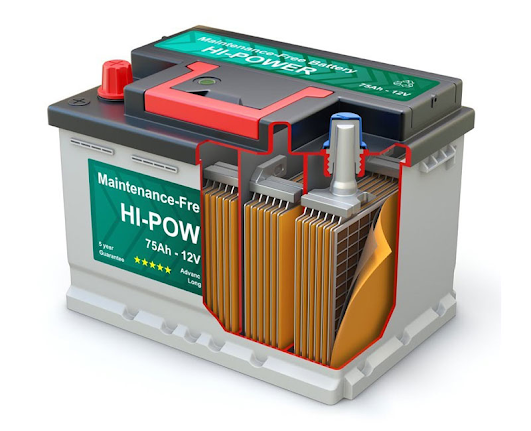There are many different battery types and pack structures. Li-ion, Li-polymer, Ni-MH, and Lead-acid are all commonly used today. Understanding the differences among these types of battery packs will help you choose the right one for your needs. Listed below are the advantages and disadvantages of each type. Once you've decided on the type, you can proceed to the next step. To ensure your battery's safety, keep the cells away from each other.
Li-ion
The benefits of lithium-ion battery packs are many, and they are widely used in a variety of applications. Unlike traditional batteries, they are lightweight and highly compact, making them convenient to carry in portable electronics. Additionally, they are ideal for use as emergency backup power during a power outage. Power interruptions can result in significant downtime for office equipment, medical equipment, and other applications. If you are interested in learning more about lithium-ion battery packs, contact ACE today. We'll be happy to talk about the benefits of these battery packs.
Because lithium-ion batteries are fragile, it's important to use a protection circuit on them. This circuit helps to regulate their temperature and limits the peak voltage of each cell during charge. It also limits the maximum current for both charging and discharging. This protection circuit also virtually eliminates lithium plating, which is a problem with other types of batteries. However, lithium-ion batteries are still the safest option for mobile devices.
Increasing demand for EVs is creating a market for li-ion battery packs. Because they can hold a high amount of energy, they are an ideal alternative to conventional lead-acid batteries. They are quiet and offer power to appliances, even while docking. These features make them an excellent choice for the automobile industry. The demand for li-ion battery packs is anticipated to grow at a CAGR of nearly three percent over the next five years.
Another advantage of lithium-ion battery packs is their ability to charge at a higher voltage than their nickel-cadmium counterparts. This higher energy density makes it possible to design batteries with only one cell. This would be impossible with traditional nickel-based batteries, which require three 1.2 volt cells wired in series. The higher voltage also makes it easier to manage power. When compared to conventional battery packs, they are significantly smaller and lighter, allowing for a much more compact design.
Another advantage of lithium-ion battery packs is their ability to last for years. Lithium-ion batteries often last between two and three years, but they can easily serve as long as five years in certain applications. In comparison, some other chemistries, like nickel-metal-hydride, age faster than lithium-ion. Lithium-ion battery packs have proven to be a viable alternative to conventional batteries and can last for five years or more.
Li-polymer
A Lithium Polymer Battery Pack can explode during use. This is a rare occurrence, and it usually occurs when a Li-Polymer battery pack suffers from an internal short circuit or external long-term short circuit, which results in an instantaneous super-large current discharge. This external short circuit exceeds the limit of the cell protection board, resulting in an explosion of gas particles. If you experience this situation, contact the manufacturer of the Li-Polymer battery pack for additional information on the product.
A Li-Polymer Battery Pack can be factory-assembled or assembled. The battery PCM contains the battery cells, which are arranged in parallel or series to maximize compartment space. Additionally, flying leads and output connectors are fitted as necessary. This allows the manufacturer to produce a plastic-cased product based on 3D drawings. In many cases, Li-Polymer battery packs are a better option than unassembled batteries because they can be tested and assembled by a company that knows how to properly assemble them.
To keep your Li-Polymer battery packs safe, ensure that they are stored at least 60% of their capacity. Also, avoid placing the battery packs on conductive surfaces. You also should avoid puncturing the battery tabs with metallic objects. Always dispose of lithium polymer batteries properly. After use, fully discharge the battery using a fire-safe device. If you cannot complete this, use a fire-resistant container and a dry fire-extinguisher to put out any potential hazard.
The voltages of Li-polymer batteries are identical to those of other lithium-ion systems, and they are compatible with any charger. Li-Polymer battery packs have similar safety concerns. Prismatic and pouch cells may expand due to gas buildup during charge, and they must be accommodated for expansion. Because they are less dense and lighter than Li-ion battery packs, Li-Polymer batteries are not as durable as Li-Ion-types.
Another difference between Li-Polymer and Li-ion batteries is the material used. Li-polymer has higher specific energy than Li-ion, and it is thinner than conventional Li-ion batteries. Li-polymer batteries are often labeled as pouch cells, and their packaging can vary. They are also lighter than traditional laptop batteries. It is important to maintain good mechanical handling while using Li-Polymer batteries, as they can be damaged easily.
Ni-MH
A Ni-MH battery pack is a rechargeable battery that uses a nickel metal hydride chemical reaction to generate power. Similar to a nickel-cadmium cell, Ni-MH battery negative electrodes use an alloy containing hydrogen to absorb the ions. As a result, the cell contains a high level of energy for everyday use. The battery is very popular among consumers because of its durability and ability to charge small devices quickly.
The primary benefits of Ni-MH battery packs are high-rate discharge and fast-recharge capabilities. As a result, these batteries can be used in conjunction with internal combustion engines, fuel cells, or solar cells for backup power. Because they can be recharged quickly, Ni-MH battery packs can handle peak load demands, providing power in the event of a primary power source outage. But, it's important to remember that overcharging can shorten the battery pack's life.
To extend the life of a Ni-MH battery, it's important to charge the batteries at a low temperature. During a fast charge, the temperature of the battery must be uniformly distributed across the entire battery. High temperatures decrease charge acceptance, cause the competitive oxygen recombination cycle to occur more quickly, and prevent efficient recharging. High temperatures also accelerate the critical degradation mechanisms, including drying and loss of the overcharge reserve.
Another advantage of NiMH batteries is their low self-discharge. The battery will self-discharge for the first day but will stabilize at less than 1% per day at room temperature. Therefore, NiMH batteries are not suitable for most light-duty uses. Furthermore, their self-discharge rate is also greatly affected by storage temperature. The temperature should not exceed 70 degrees Fahrenheit. Therefore, it's important to choose rechargeable Ni-MH batteries that are low-self-discharge.
While Ni-MH batteries are generally known for their self-discharge rate of around one percent per day, the memory effect can cause batteries to fail. To minimize this problem, manufacturers can use a BMS, a technology developed by Texas Instruments and Analog Devices. By trickle charging, the pack always maintains its full capacity and minimizes the negative effects of overcharging. In this way, the cost of Ni-MH batteries is lower than that of other rechargeable batteries.
Lead-acid
A lead-acid battery pack has negative and positive plates. Each plate contains a small amount of lead. The electrolyte solution is higher in sulfuric acid, which stores most of the chemical energy in the lead battery. The high charging voltages required to activate the lead battery will also generate hydrogen and oxygen gas via the electrolysis of water. However, the battery will lose some of its electrolytes during the charging process. Some lead-acid battery designs include slots to examine and top off the electrolyte.
Using the LTC3305 balancer to balance lead-acid battery packs is a simple solution for balancing lead-acid battery packs. It can balance up to four series-connected lead-acid batteries, and each stack consists of an auxiliary cell connected in parallel to each battery. The auxiliary cell is connected to an external network of 10 low-RDS(ON) NMOS transistors. The current flow in the appropriate direction when the voltages are different.
Lead-acid battery packs have a long history of use in various applications. They are mainly used in automobile starting batteries, lighting, and ignition batteries. The amount of lead used in battery production was estimated at three million tons in 1992. Lead-acid battery packs are typically large and are commonly used as backup power systems in cell phone towers, stand-alone power systems, and high-availability settings. The modified versions of standard cells have improved their storage time and reduced maintenance requirements.
Lithium-ion battery packs are a serious contender to replace lead-acid battery packs in some applications. These batteries are at the opposite end of the energy density spectrum from lead-acid batteries, which means they can pack more energy into a smaller space and weigh less. Although they are a relative newcomer, lithium-ion battery packs are expected to decrease in cost over the next decade. They can also be more efficient than lead-acid batteries in some situations.
Unlike lithium-ion batteries, lead-acid battery packs can be over or undercharged. By understanding the correct way to charge a lead-acid battery pack, you can maximize its lifetime and maximize its use. A lead-acid battery pack is an inexpensive, versatile power source for many different applications. It is a practical and versatile way to demonstrate new energy technologies to students. The battery packs can also be used in Electricity and New Energy training equipment.






Post a Comment